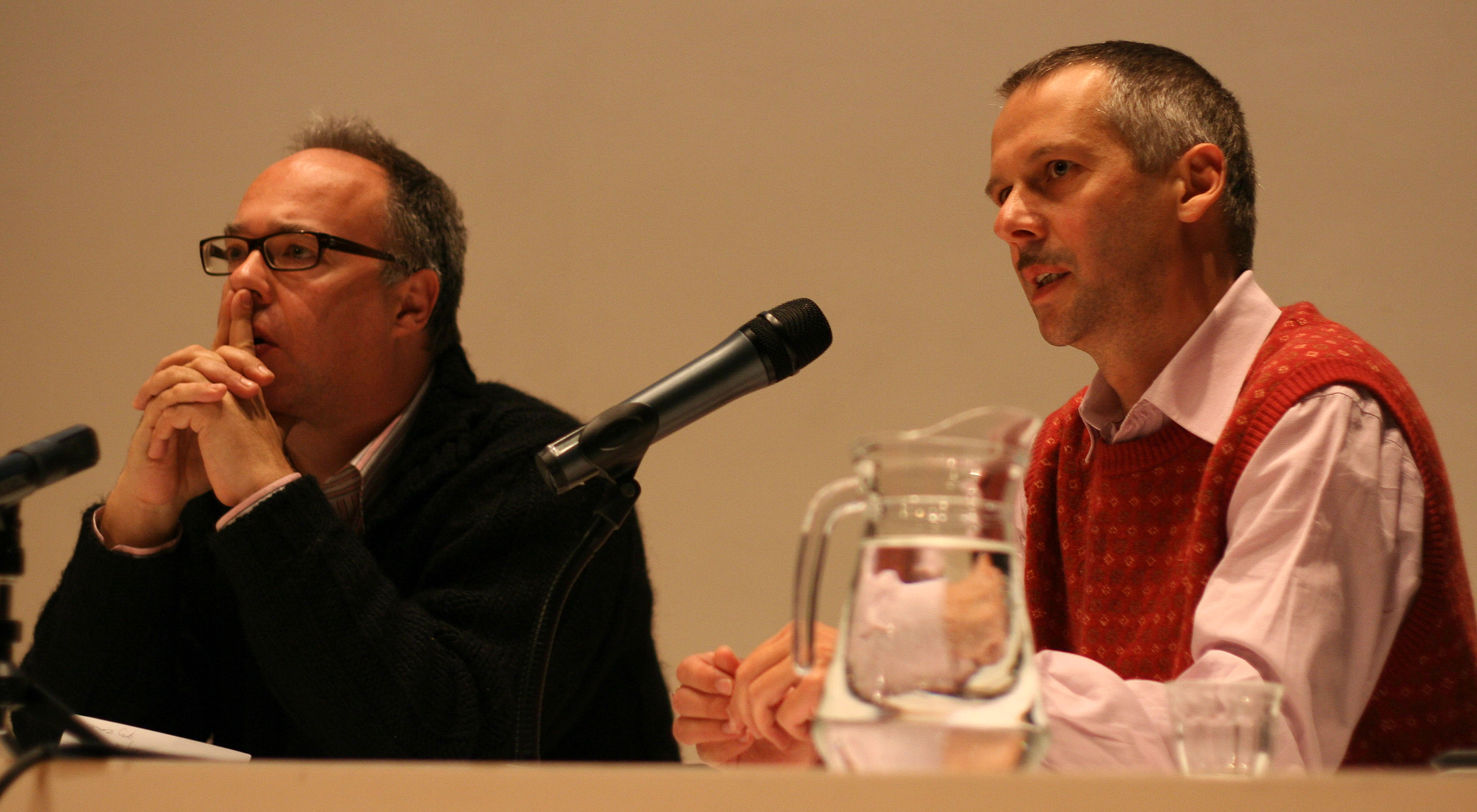 “The lights dim slowly, but I am also very slow”, says German Roger Buergel before he starts his keynote lecture Beyond Identity and Difference. Is the artistic director of the famous contemporary art event Documenta XII (2007) referring to the fact that he was delayed and the timeschedule had to be changed? Or does he refer to the tempo in which he gives his lecture? He speaks slowly and gentle, and that’s a good thing.
“The lights dim slowly, but I am also very slow”, says German Roger Buergel before he starts his keynote lecture Beyond Identity and Difference. Is the artistic director of the famous contemporary art event Documenta XII (2007) referring to the fact that he was delayed and the timeschedule had to be changed? Or does he refer to the tempo in which he gives his lecture? He speaks slowly and gentle, and that’s a good thing.
Soon Buergel’s lecture gets philosophical, he speaks about ‘the void’, ‘the desire to kill desire’ and comes to the thought that the art world needs strong psycho analytic treatment. Not an easy lecture.
Roger Buergel refers to the images from Israel and Palestine that were shown during Mario Rizzi’s presentation Neighbours. Those images told the sad stories of suicide bombers, families who lost their children and buildings that had been destroyed in the conflict. “How does an audience react to such a piece? It leaves you speachless when you have a heart, but what does it do to you?”
That’s about the essence of Buergel’s story. People are bound to their identity, they have prejudices and therefore make certain assumptions. They see things their way, which may be the same way that people in their surroundings see things.
Accorging Roger Buergel it’s important to create ‘a void’. “This void is not given to you, you have to create it yourself and that takes time. You have to loose your own expectations and the expectations of the others. By doing that, you are able view art in a new, different way.” In an ideal situation, a museum should create a large void that visitors fill in and take over. A new way of showing and viewing art.
Director Charles Esche of the Van Abbemuseum is very clear at the end of this keynote lecture: “Things have to be shown in such a way that you are able to appreciate them.”